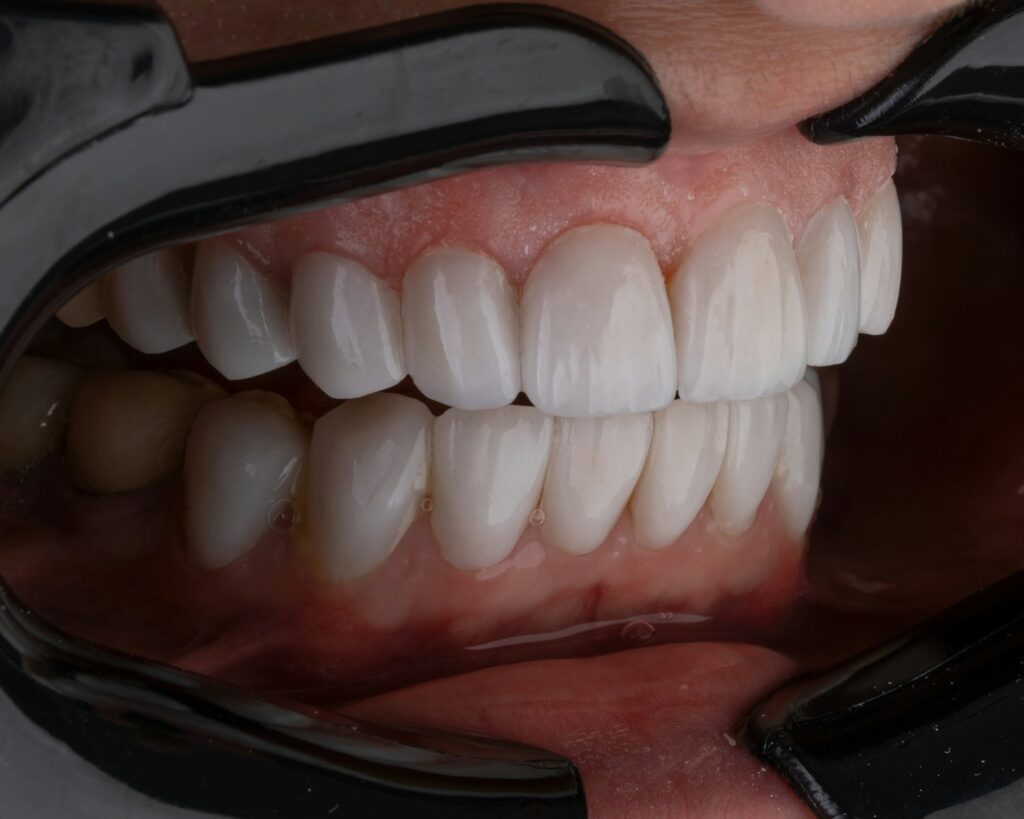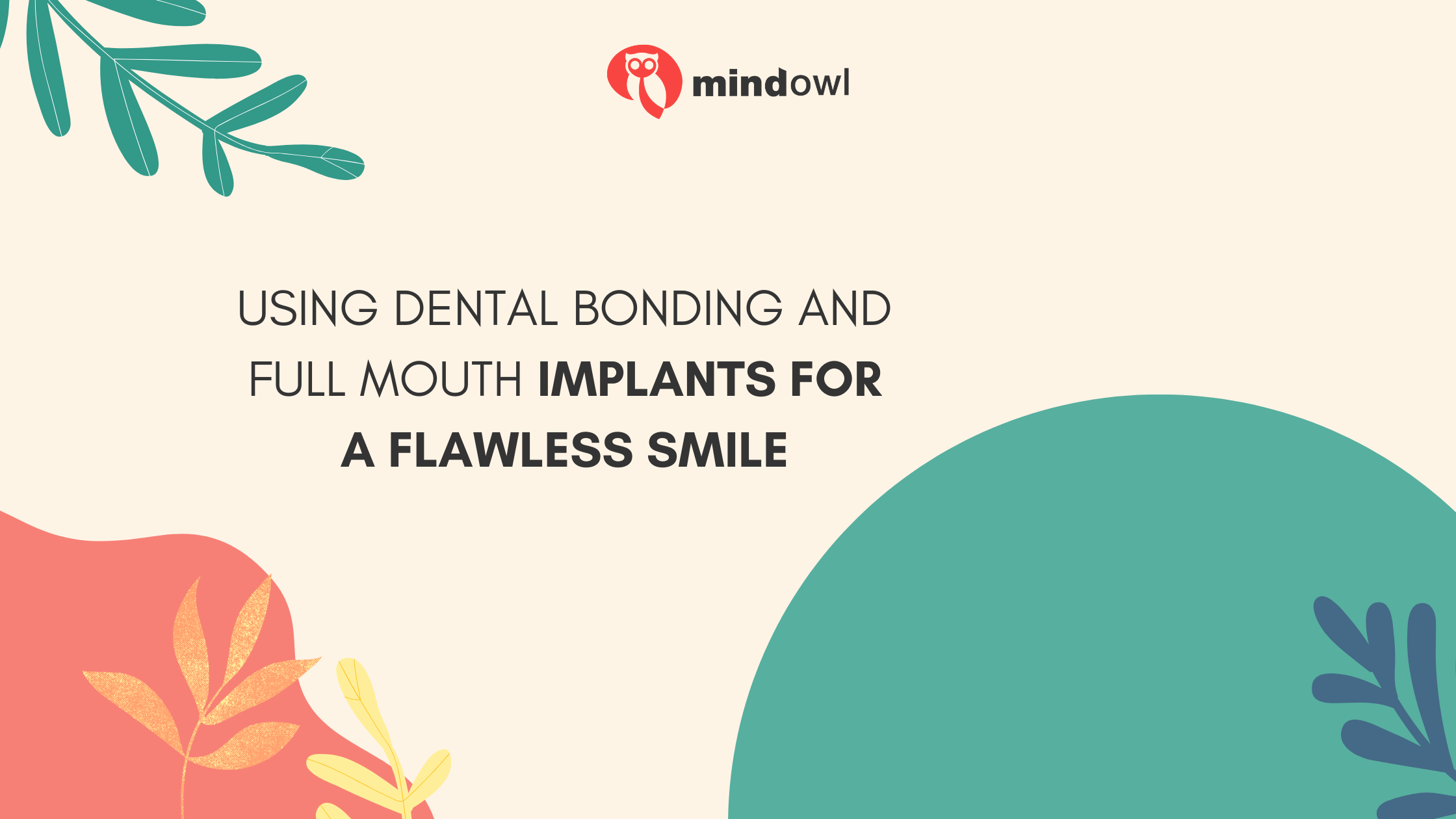A confident smile is more than just an aesthetic feature it plays a crucial role in self-esteem, first impressions, and overall oral health. However, gaps, chipped teeth, or missing teeth can impact both appearance and functionality, making many individuals self-conscious about their smiles. Fortunately, modern dentistry offers two effective solutions: dental bonding and full-mouth implants.
These treatments provide ways to restore and enhance smiles, but they serve different purposes. Whether you need a quick cosmetic fix or a complete dental transformation, understanding these options can help you make the best decision. This article will explore dental bonding and full mouth implants, their benefits, costs, and when to choose one (or both) for a perfect smile.
Understanding Dental Bonding

What is Dental Bonding?
Dental bonding is a cosmetic procedure used to fix minor imperfections such as small gaps, chips, discoloration, and slightly misaligned teeth. It involves applying a tooth-colored resin to the surface of the teeth, which is then shaped and hardened using a special light.
How It Works
- Preparation – The tooth is cleaned, and a mild etching solution is applied to help the resin bond effectively.
- Application – A tooth-colored composite resin is applied and molded to the desired shape.
- Curing & Polishing – A UV light hardens the material, and the dentist polishes it to match the natural tooth’s texture and shine.
- Completion – The entire process typically takes 30–60 minutes per tooth and is painless.
Pros & Cons of Dental Bonding
Advantages:
- Quick and non-invasive.
- Cost-effective compared to other dental treatments.
- Reversible and requires minimal tooth enamel removal.
- Ideal for fixing minor cosmetic issues.
If you’re considering this option, check with Fresh Dental if you’re an excellent candidate for dental bonding. A dental professional can evaluate your teeth and determine whether bonding is the right solution for your needs.
Disadvantages:
- Less durable than veneers or crowns (lasts about 5–10 years).
- More prone to staining over time.
- Not suitable for severe dental damage or large gaps.
Understanding Full Mouth Implants
What Are Full Mouth Dental Implants?
Full-mouth dental implants are a permanent solution for missing or severely damaged teeth. Unlike dentures, implants provide a fixed, long-term replacement that looks and functions like natural teeth. The procedure involves placing titanium posts into the jawbone, which serve as artificial tooth roots for attaching crowns, bridges, or dentures.
How They Work
- Consultation & Planning – A dentist assesses bone density and oral health.
- Surgical Implantation – Titanium posts are surgically inserted into the jawbone.
- Healing Phase – The bone integrates with the implants over 3–6 months (osseointegration).
- Crown Placement – After healing, custom-made artificial teeth are attached to the implants.
Pros & Cons of Full Mouth Implants
Advantages:
- Permanent, natural-looking, and highly functional.
- Prevents jawbone deterioration.
- Allows normal eating, speaking, and oral hygiene.
- No risk of slipping like traditional dentures.
Choosing the right specialist for this procedure is crucial. Learn more about How to Choose the Right Doctor for Full Mouth Dental Implants at Doctors Implants to ensure the best results.
Disadvantages:
- High cost ($20,000–$50,000 for a full set).
- Requires surgery and a longer healing period.
- Not everyone qualifies (bone density and oral health must be assessed).
When to Choose Dental Bonding vs. Full Mouth Implants
Best for Dental Bonding
- Minor gaps, small chips, slight discoloration, or minor reshaping.
- Individuals who prefer a quick and budget-friendly fix.
- Those with healthy teeth need only cosmetic improvement.
Best for Full Mouth Implants
- Patients with multiple missing or severely damaged teeth.
- Those struggling with dentures and seeking a permanent solution.
- Individuals are concerned about bone loss and long-term oral health.
Combination Approach
In some cases, a combination of both treatments provides the best outcome:
- Implants for missing teeth + Bonding for minor imperfections result in a natural and symmetrical smile.
- Dentists often use bonding after implant placement to enhance aesthetics.
- Example: A patient with missing molars is replaced with implants while front teeth are bonded for a polished finish.
The Smile Makeover Process: Combining Bonding and Implants
Patients undergoing full smile restoration may benefit from both treatments. Here’s a step-by-step overview:
- Consultation: The dentist evaluates teeth and determines a customized plan.
- Implants First: If necessary, missing teeth are replaced with implants.
- Healing & Adjustments: Additional cosmetic refinements may be made after the implant process.
- Bonding for Finishing Touches: Bonding is applied to minor imperfections for a final aesthetic enhancement.
- Final Results: A perfectly aligned, durable, and natural-looking smile.
Real-life case studies highlight patients who opted for both treatments and saw transformative results functionally and aesthetically.
Cost Comparison & Insurance Coverage
Dental Bonding Costs
- $100–$500 per tooth (varies based on complexity and location).
- It is considered a cosmetic procedure, so most insurance plans do not cover it.
Full Mouth Implants Costs
- $20,000–$50,000 (depending on the number of implants and materials used).
- Some insurance policies cover part of the procedure, especially for medically necessary cases.
Financing Options
- Many dental offices offer payment plans, third-party financing, or dental discount programs.
- Flexible financing makes it possible to combine both treatments within a reasonable budget.
Conclusion
A beautiful smile is within reach, whether you need minor cosmetic improvements or a full dental restoration. Dental bonding is an excellent choice for small fixes, while full-mouth implants provide long-term, permanent solutions for missing teeth. In many cases, a combination of both delivers the best results.
If you’re unsure which treatment is right for you, schedule a consultation with a qualified dentist to discuss your options. Your perfect smile is just a dental visit away!
MindOwl Founder – My own struggles in life have led me to this path of understanding the human condition. I graduated with a bachelor’s degree in philosophy before completing a master’s degree in psychology at Regent’s University London. I then completed a postgraduate diploma in philosophical counselling before being trained in ACT (Acceptance and commitment therapy).
I’ve spent the last eight years studying the encounter of meditative practices with modern psychology.

